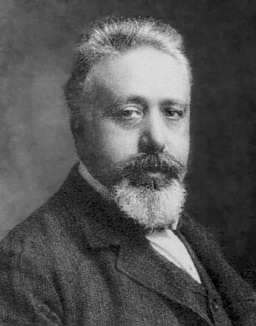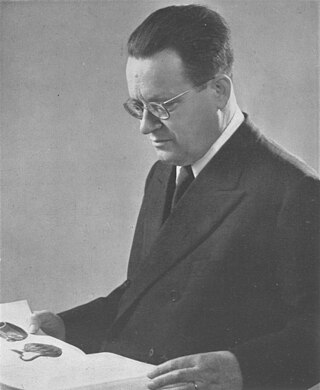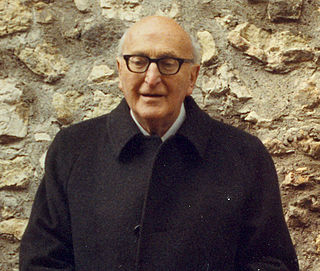
Vito Volterra was an Italian mathematician and physicist, known for his contributions to mathematical biology and integral equations, being one of the founders of functional analysis.

Mauro Picone was an Italian mathematician. He is known for the Picone identity, the Sturm-Picone comparison theorem and being the founder of the Istituto per le Applicazioni del Calcolo, presently named after him, the first applied mathematics institute ever founded. He was also an outstanding teacher of mathematical analysis: some of the best Italian mathematicians were among his pupils.
Enrico Alleva is an Italian ethologist. He has been president of the Società Italiana di Etologia since 2008.
Alberto Melloni is an Italian church historian and a Unesco Chairholder of the Chair on Religious Pluralism & Peace, primarily known for his work on the Councils and the Second Vatican Council. Since 2020, he is one of the European Commission's Chief Scientific Advisors.

Gaetano Fichera was an Italian mathematician, working in mathematical analysis, linear elasticity, partial differential equations and several complex variables. He was born in Acireale, and died in Rome.

Luca Valerio was an Italian mathematician. He developed ways to find volumes and centers of gravity of solid bodies using the methods of Archimedes. He corresponded with Galileo Galilei and was a member of the Accademia dei Lincei.
Claudio Barigozzi was an Italian biologist and geneticist.

Bruno Migliorini was an Italian linguist and philologist. He was the author of one of the first scientific histories of Italian language and was president of the Accademia della Crusca.

Enzo Martinelli was an Italian mathematician, working in the theory of functions of several complex variables: he is best known for his work on the theory of integral representations for holomorphic functions of several variables, notably for discovering the Bochner–Martinelli formula in 1938, and for his work in the theory of multi-dimensional residues.

Francesco Gabrieli was counted among the most distinguished Italian Arabists together with Giorgio Levi Della Vida and Alessandro Bausani, of whom he was respectively a student and colleague at the Sapienza Università di Roma.
Luca Serianni was an Italian linguist and philologist.
Ettore Gabrici was an Italian archaeologist and numismatist.
Andrea Della Corte was an Italian musicologist and critic. Born in Naples on 5 April 1883, Della Corte studied law at the University of the native city, but was self-taught in music. After some short experiences in Neapolitan papers, he moved to Turin, where he was music critic for La Stampa from 1919 to May 1967. He brought the music journalism in Italy to a level of «professionalism hitherto unknown». In Turin, Della Corte also taught history of music, both at the Turin Conservatory (1926–53) and at the University of Turin (1939–53).

Enrico Bompiani was an Italian mathematician, specializing in differential geometry.
Gianfranco Cimmino was an Italian mathematician, working mathematical analysis, numerical analysis, and theory of elliptic partial differential equations: he is known for being the first mathematician generalizing in a weak sense the notion of boundary value in a boundary value problem, and for doing an influential work in numerical analysis.
Giovanni Macchia was an Italian literary critic and essayist.
Nino Valeri was an Italian historian.
Cesare Questa (1934-2016) was an Italian classicist particularly known for his studies of the metres of the Roman playwrights Plautus and Terence. His researches over many years were summed up in his major work La Metrica di Plauto e Terenzio published in Urbino in 2007.
Natalino Sapegno was a literary critic and Italian academician. He came to prominence as a leading scholar of fourteenth century Italian literature.
Giuseppe Fiocco was an Italian art historian, art critic, and academic. He is known for his research and writings on Venetian and Florentine artists.






